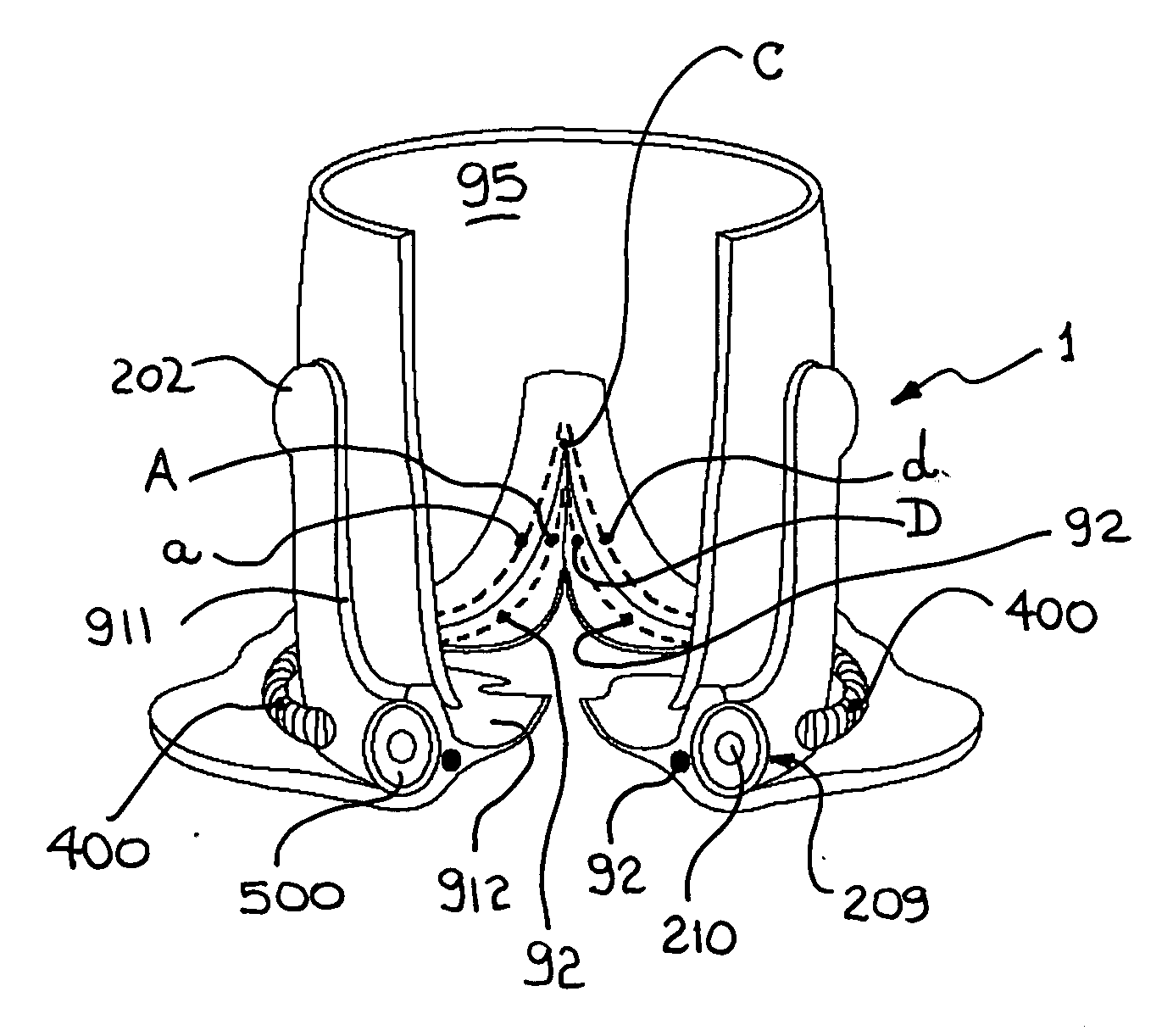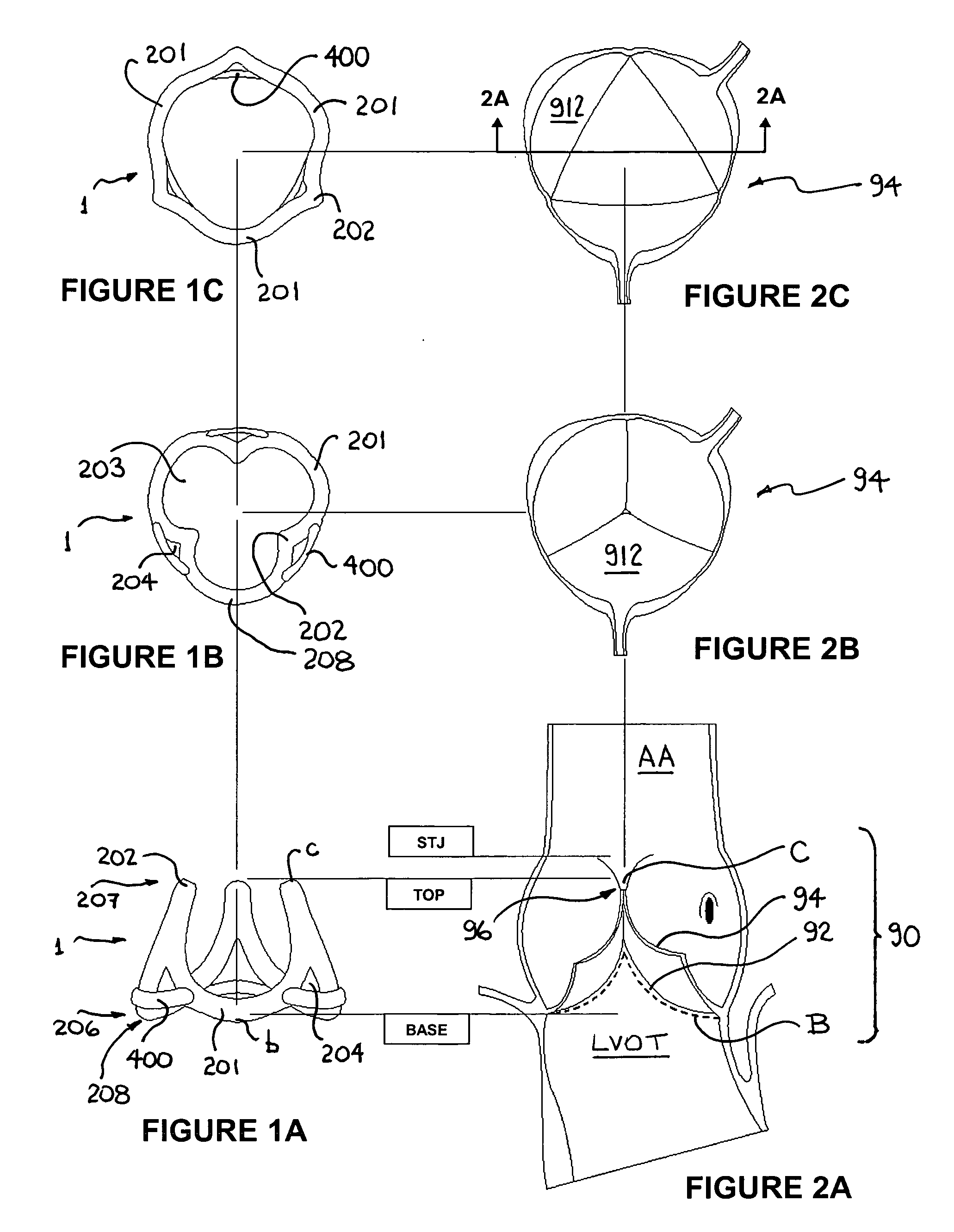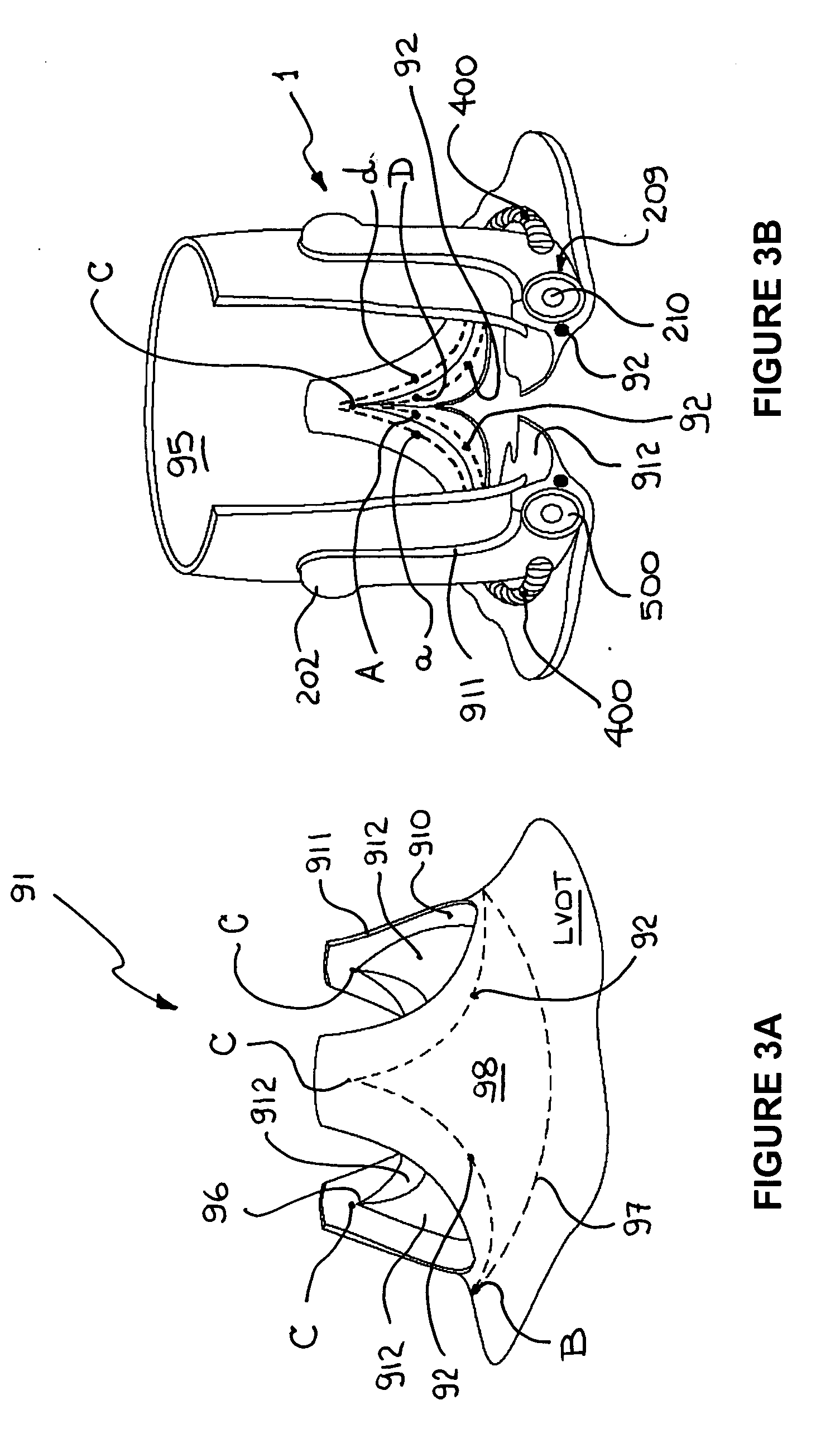Aortic annuloplasty ring
- Summary
- Abstract
- Description
- Claims
- Application Information
AI Technical Summary
Benefits of technology
Problems solved by technology
Method used
Image
Examples
first embodiment
[0059] Referring now to FIGS. 4-6, ring 1 will be described in greater detail. Ring 1 consists of an undulated or scalloped three-peak ring structure, or space frame 200 and an annulus-restraining means or annulus-limiting member 400. Frame 200 is configured to form a closed, non-planar, continuous band including three trough sections 201 located in proximity to ring plane BASE, and three crest sections 202 located in proximity to ring plane TOP. Said crest sections are circumferentially interspersed between said trough sections. Said undulated space frame 200 is preferably constructed from three substantially U-shaped frame members 210. Said three frame members 210 are connected at the three resulting crests sections 202 at top 207 of ring 1 by three crown plates, end connectors, or fittings 300, and coupled at the base 206 of ring 1 by three hoop-closing members, tethers, ties or restraints 401.
[0060] Each of U-shaped frame members 210 is defined by a concave base 211 from which e...
fifth embodiment
[0100] In a variant of this fifth embodiment, illustrated in FIG. 18B, ring 5 is configured with the elastomeric layer or sheath 500 extending below crest sections 202 and end fittings 300, and is draped between two adjacent U-shaped frame members 210 in a manner to substantially cover infra-commissure zone 204 with an elastomeric web 462. Elastomeric web 462 may be of variable thickness along its height, circumferential width, or both, in order to fine-tune the flexibility or elasticity of said web 462 to allow proper modulation or control of dimensions of aortic root 90 by ring 5. Elastomeric web 462 may also be made from a different material than elastomeric sheath 500. Alternatively, web 462 may be made as a composite construction having fibre reinforcement at strategic locations therein to tailor flexibility of said web in certain directions. Alternatively still, at least a portion of said elastomeric web 462 may also be covered by a textile fabric covering similar to textile f...
sixth embodiment
[0129] Referring now more specifically to FIG. 22C, there is shown a variant composite prosthetic ring-conduit 61 to the sixth embodiment illustrated in FIG. 22A. Variant ring-conduit 61 is different to the ring-conduit 6 in that it includes a variant prosthetic conduit 74, said conduit 74 however is still advantageously attached or integral with ring 81 to form a composite ring-conduit assembly 61. Conduit 74 is constructed from a substantially elastic biomaterial such as a hydrogel, or any other like elastic biomaterial suitable for implant use and for contact with blood. More specifically, conduit 74 is preferably constructed from a cryogel polyvinyl alcohol (cPVA) having been cross-linked by repeat freeze-thaw cycles to obtain the desired elasticity, similar to native aortic root tissue. Typically, three to five such freeze-thaw cycles may be employed to construct a cPVA biomaterial with the desired representative material properties. Ring 81 is preferably introduced within a mo...
PUM
 Login to View More
Login to View More Abstract
Description
Claims
Application Information
 Login to View More
Login to View More - R&D
- Intellectual Property
- Life Sciences
- Materials
- Tech Scout
- Unparalleled Data Quality
- Higher Quality Content
- 60% Fewer Hallucinations
Browse by: Latest US Patents, China's latest patents, Technical Efficacy Thesaurus, Application Domain, Technology Topic, Popular Technical Reports.
© 2025 PatSnap. All rights reserved.Legal|Privacy policy|Modern Slavery Act Transparency Statement|Sitemap|About US| Contact US: help@patsnap.com



